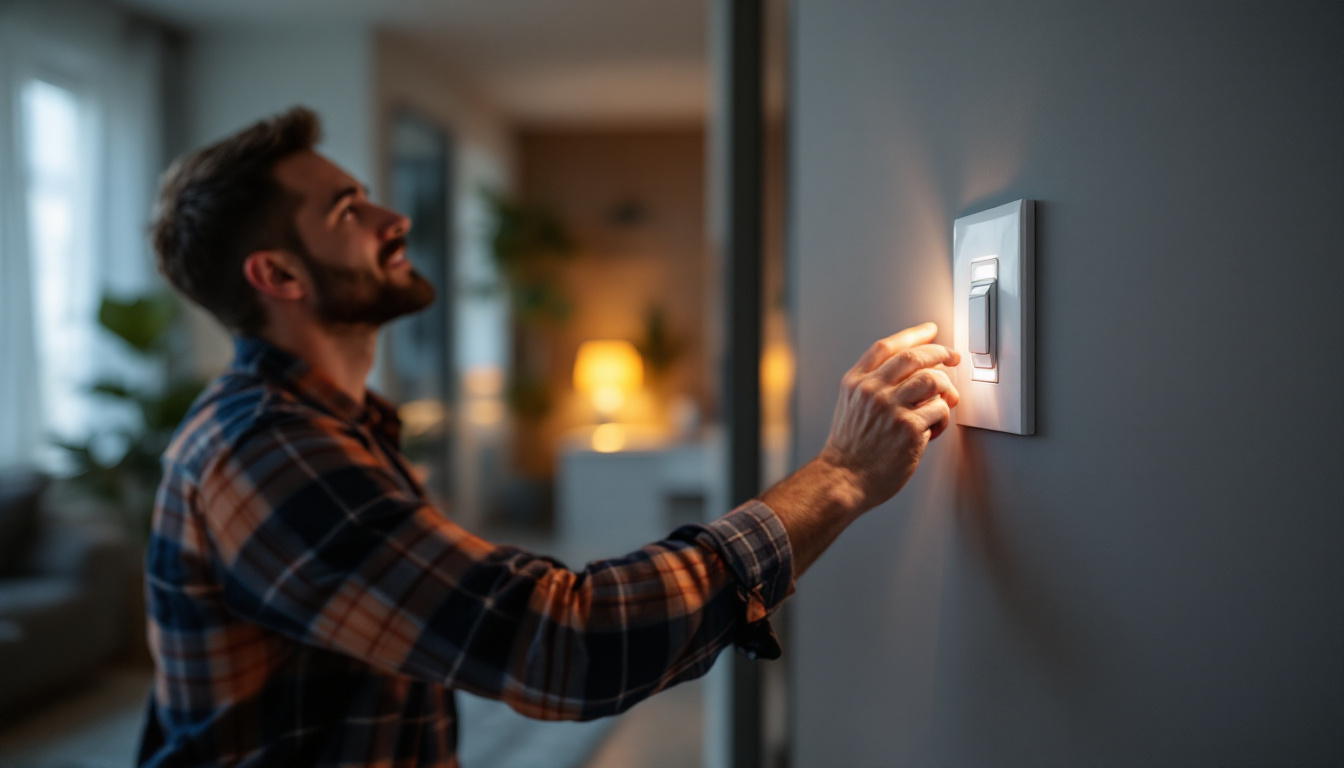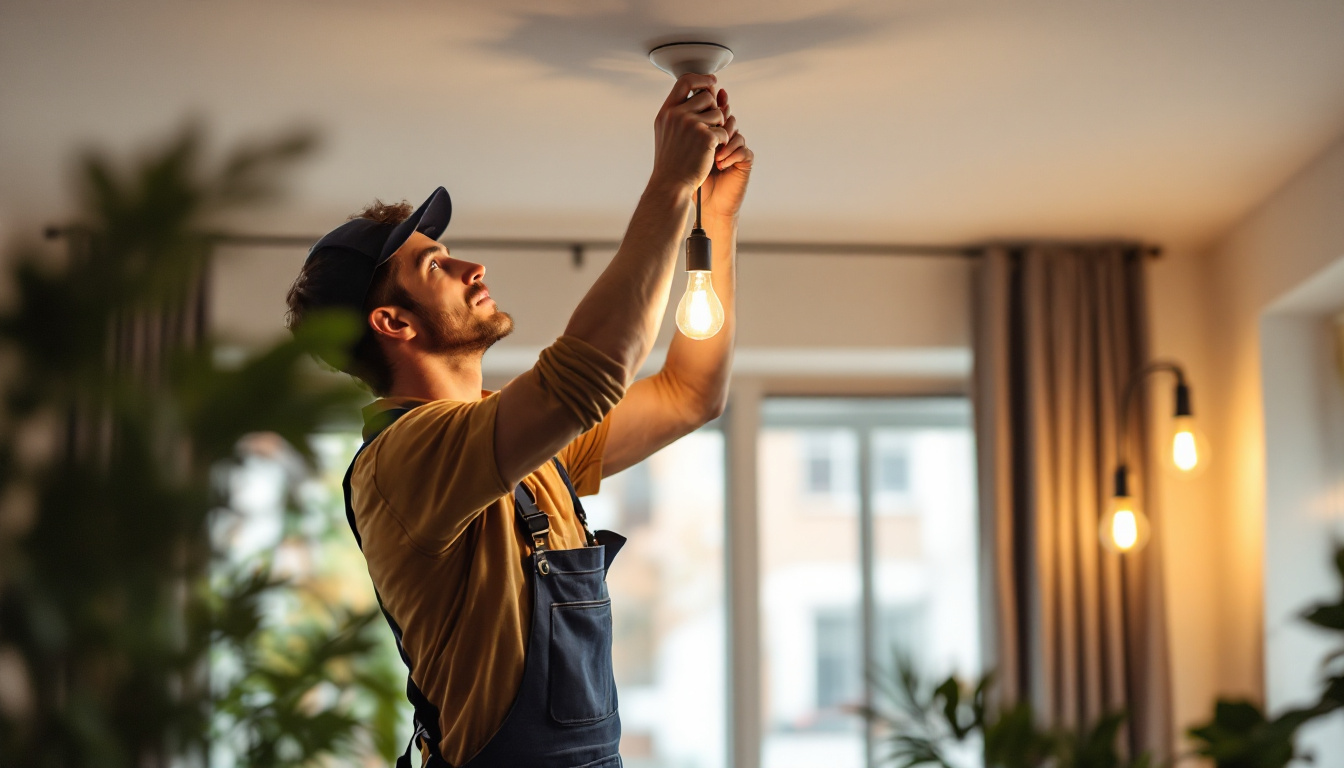
In the evolving landscape of lighting technology, motion-activated light switches have emerged as a practical solution for enhancing energy efficiency and convenience. For lighting contractors, understanding the nuances of these devices can significantly improve installation practices and customer satisfaction. This article delves into the best practices for utilizing motion-activated light switches, ensuring that contractors can provide optimal service and solutions to their clients.
Motion-activated light switches are designed to automatically turn on lights when they detect motion within a certain range. This technology not only conserves energy by reducing unnecessary lighting but also enhances safety and convenience in various settings, such as homes, offices, and public spaces. By eliminating the need to fumble for light switches in the dark, these devices provide a seamless experience, allowing individuals to move freely without interruption.
These switches typically use passive infrared (PIR) sensors, ultrasonic sensors, or a combination of both to detect movement. PIR sensors are more common and work by sensing changes in infrared radiation, while ultrasonic sensors emit sound waves to detect motion. Understanding these technologies is crucial for contractors when selecting the right switch for a specific application. Moreover, advancements in technology have led to the development of smart motion sensors that can be integrated with home automation systems, allowing for remote control and monitoring via smartphones or smart home devices.
When selecting motion-activated light switches, it is essential to understand the different types of sensors available. Each type has its unique advantages and is suited for specific environments. Knowing the characteristics of each sensor can help ensure optimal performance and reliability in various applications.
Motion-activated light switches can be employed in various settings, each requiring careful consideration of the specific needs and challenges. Common applications include:
In addition to these applications, motion-activated light switches are increasingly being integrated into smart building technologies. This integration allows for advanced features such as scheduling, where lights can be programmed to turn on or off at specific times, and adaptive lighting, which adjusts brightness based on ambient light levels. These innovations not only improve energy efficiency but also enhance user experience by providing a more tailored lighting solution that meets the dynamic needs of different environments.
Proper installation of motion-activated light switches is critical for optimal performance. Following best practices ensures that the devices function as intended and meet customer expectations.
The placement of motion sensors is paramount. They should be installed in areas where movement is expected and where the sensor’s field of view can cover the desired space effectively. For instance, placing sensors in corners can maximize coverage.
Additionally, contractors should consider the height at which the sensor is mounted. Typically, a height of 6 to 8 feet is recommended for most residential applications. However, this can vary based on the specific sensor model and the area being monitored. For outdoor installations, it is advisable to position sensors slightly higher to avoid interference from pets or small animals, which may trigger the lights unnecessarily. Furthermore, ensuring that the sensor is not obstructed by furniture, plants, or other objects can significantly enhance its effectiveness.
Most motion-activated light switches come with adjustable sensitivity and timing settings. Contractors should take the time to configure these settings according to the environment. For example, in high-traffic areas, a higher sensitivity setting may be appropriate, while in less frequented spaces, a lower setting can prevent unnecessary activation.
Timing settings, which determine how long the lights remain on after detecting motion, should also be tailored to the specific use case. For instance, a longer duration may be beneficial in a garage, while a shorter duration might suffice in a restroom. Additionally, some advanced models offer features like ambient light sensing, allowing the lights to operate only when natural light levels are low, further enhancing energy efficiency. It’s also worth noting that regular testing and adjustments may be necessary, especially in environments where furniture arrangements or seasonal changes affect the sensor’s performance.
One of the primary advantages of motion-activated light switches is their potential for energy savings. However, maximizing these savings requires careful consideration during installation and usage.
The type of light bulbs used in conjunction with motion-activated switches can significantly affect energy efficiency. LED bulbs are often the best choice due to their low energy consumption and long lifespan. Contractors should recommend LED options to clients looking to reduce energy costs and minimize maintenance.
Additionally, it is crucial to ensure that the wattage of the bulbs aligns with the switch’s specifications. Overloading a switch can lead to malfunctions and safety hazards.
Educating clients about the benefits and proper usage of motion-activated light switches is essential. Contractors should explain how these devices can help reduce energy consumption and enhance safety. Providing guidance on adjusting settings and understanding the sensor’s capabilities can empower clients to make the most of their investment.
Moreover, discussing the importance of regular maintenance, such as cleaning the sensors to prevent dust buildup, can extend the lifespan of the devices and ensure optimal performance.
While motion-activated light switches offer numerous benefits, they are not without challenges. Contractors should be prepared to address common issues that may arise during installation and usage.
One of the most common complaints regarding motion-activated switches is false triggering. This can occur due to pets, moving objects, or even changes in temperature. To minimize this issue, contractors should recommend sensors with adjustable sensitivity settings and educate clients on the importance of proper placement.
In some cases, installing a dual-technology sensor can help reduce false triggers by requiring both PIR and ultrasonic detection before activating the lights. This added layer of reliability can enhance customer satisfaction.
Another challenge is the limited detection range of certain sensors. Contractors should assess the area being monitored and select a sensor with an appropriate range. If a larger area needs coverage, multiple sensors may be necessary to ensure complete illumination.
Additionally, understanding the layout of the space can help in positioning sensors to maximize their effectiveness. For example, avoiding obstructions like furniture can significantly improve detection capabilities.
The field of motion-activated lighting is continually evolving, with new technologies and trends emerging. Staying informed about these developments can help contractors provide cutting-edge solutions to their clients.
As smart home technology becomes increasingly prevalent, the integration of motion-activated light switches with smart systems is gaining traction. Many modern switches can now connect to Wi-Fi, allowing users to control their lighting remotely through smartphones or voice-activated assistants.
This integration not only enhances convenience but also provides users with real-time data on energy usage, enabling them to make informed decisions about their lighting habits.
Advancements in sensor technology are also transforming the landscape of motion-activated lighting. Newer models may incorporate features such as adaptive learning, which allows the sensor to adjust its sensitivity based on user behavior over time.
Additionally, some sensors are now equipped with ambient light sensors, which can determine whether natural light is sufficient and prevent unnecessary activation of artificial lighting. This feature can further enhance energy efficiency and reduce costs.
Motion-activated light switches represent a significant advancement in lighting technology, offering numerous benefits for both residential and commercial applications. For lighting contractors, understanding the best practices for installation, energy efficiency, and the latest trends is essential for providing exceptional service.
By following the guidelines outlined in this article, contractors can enhance their expertise, improve customer satisfaction, and contribute to a more energy-efficient future. As technology continues to evolve, staying informed and adaptable will ensure that contractors remain at the forefront of the lighting industry.
Ready to take your lighting installations to the next level? At LumenWholesale, we provide lighting contractors like you with the highest quality motion-activated light switches and other spec-grade lighting products at unbeatable wholesale prices. Say goodbye to local distributor markups and hello to our extensive selection that meets rigorous industry standards. With free shipping on bulk orders, you can stock up on reliable, high-performance lighting solutions that will delight your clients and enhance your projects. Don’t settle for less—choose LumenWholesale for the perfect blend of quality, affordability, and convenience. Wholesale Lighting at the Best Value is just a click away.

Discover expert tips from lighting contractors on choosing the perfect outdoor lights for sale.

Discover cost-effective strategies and expert tips for lighting contractors to enhance their projects without breaking the bank.

Discover the key features that distinguish top lighting contractors when it comes to selecting covers for outside electrical outlets.

Discover the evolution of the first invented light bulb and explore essential best practices for modern lighting contractors.